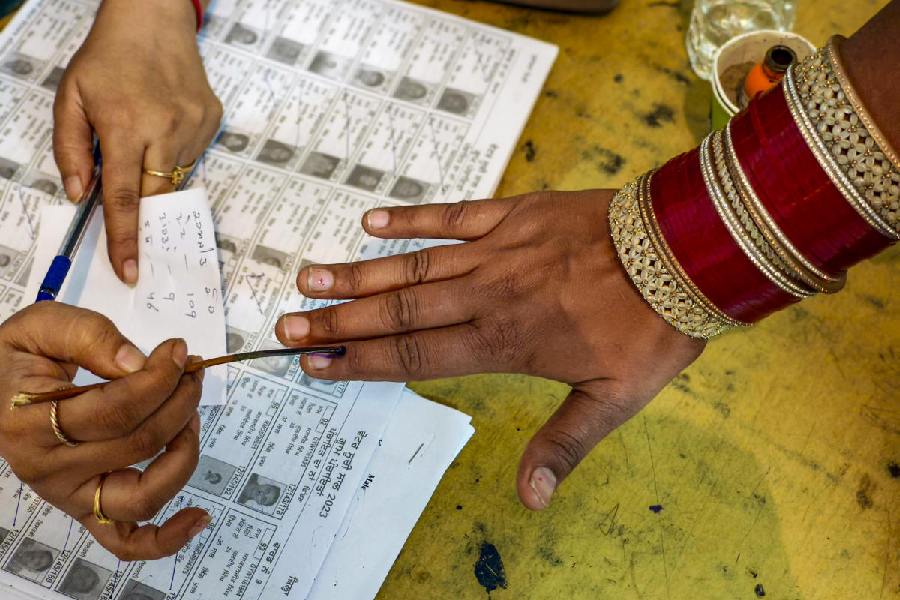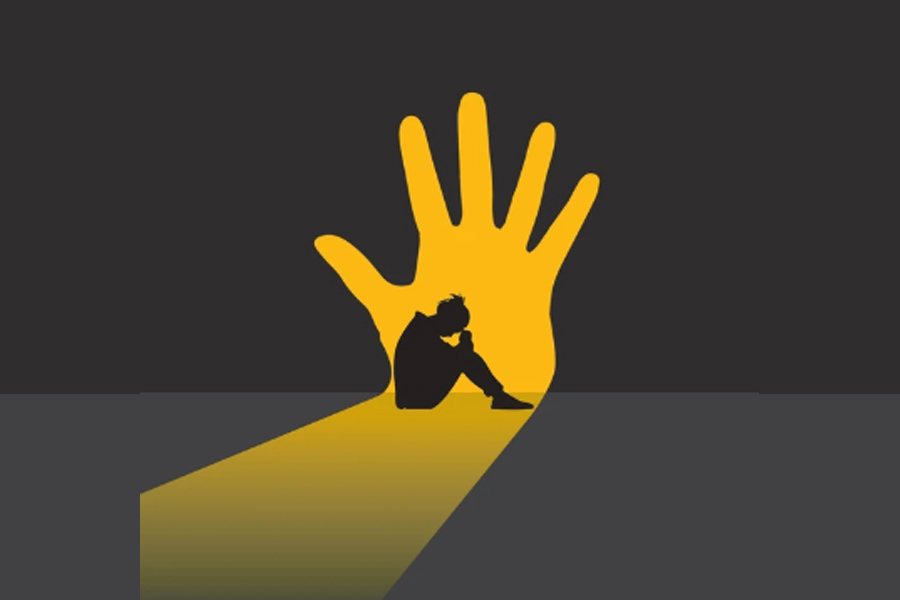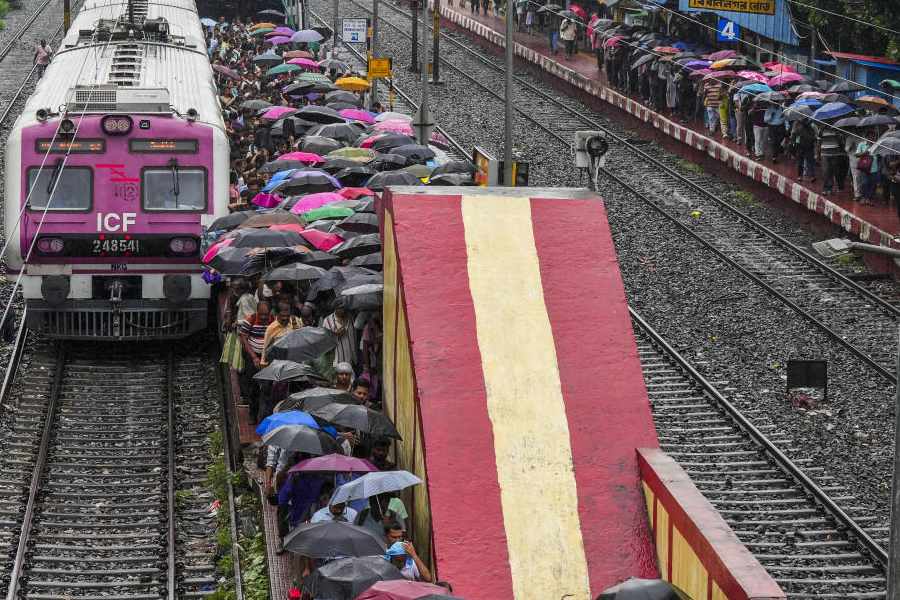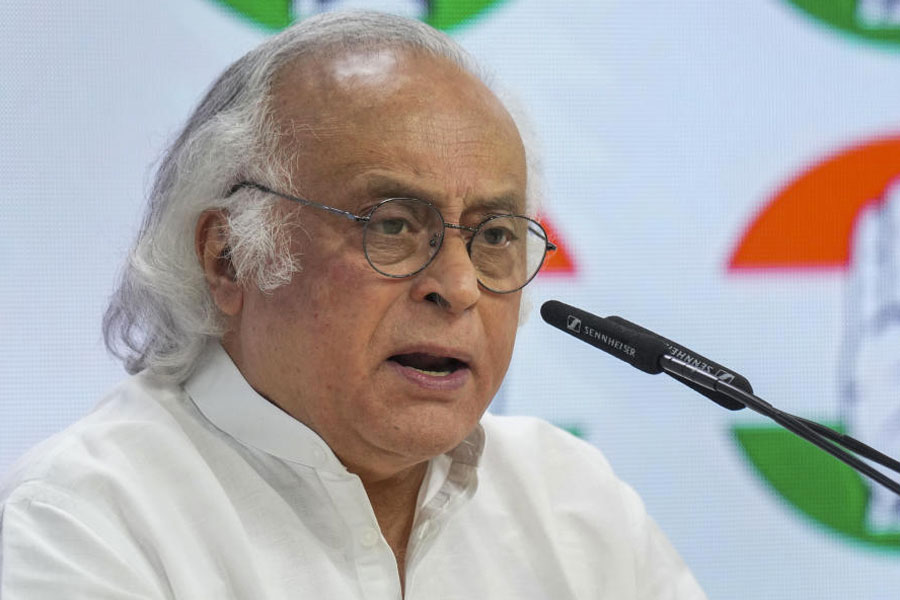|
|
| An eye for an eye |
“Many who live deserve death, and some who die deserve life …don’t be too eager to deal out death in judgment, for even the wise cannot see all ends” — goes a passage in J.R.R. Tolkien’s The Lord of the Rings. The poet, Pablo Neruda, greatly admired by the West Bengal chief minister, wrote, “May the bad not kill the good/ Nor the good kill the bad;/ I am a poet, without any bias;/ I say without doubt or hesitation/ There are no good assassins.” But if writers, poets, statesmen and even jurists have opposed the death penalty, politicians and the people have overwhelmingly been in favour of it.
When the president turned down Dhananjay Chatterjee’s mercy petition earlier this month, he is believed to have gone by the advice of the Union home ministry and the attorney-general. Both felt that the grant of pardon to the rapist-killer would suggest indifference to the public outrage over the gravity of his crime. The law does not require the presidential decree for death to be a “speaking order” nor is there any provision to make it public.
Internationally, the trend has been to do away with the death penalty, but the Indian government has been stoutly defending it at global conventions. The home ministry, strangely, seems to have no data on the number of death sentences given, or the number of executions carried out. Since the government does not appear to have studied the issue dispassionately, its resistance to the demand for an end to capital punishment seems to be more of an emotional response.
The Law Commission did circulate a questionnaire, not to elicit opinion on the death penalty but to find out the best method for executing it. This despite Mahatma Gandhi having said, “I cannot agree to anyone being sent to the gallows.” For those who do not agree with Gandhi, this is what a former chief justice, P.N. Bhagwati, had to say, “Howsoever careful may be the procedural safeguards, it is impossible to eliminate the chance of judicial error.”
Had Dhananjay Chatterjee been a neighbour’s son, or an engineering student, would his fate have been different? More people appear willing to answer in the affirmative after the man has been hanged. Even the executioner, who had been condemning the former security guard, appears to have been moved by the quiet dignity with which the convict met his death. He wished everyone well, reiterated his innocence and allowed himself to be hanged. His last words, “Aami nirdosh”, will haunt some for months to come, though the West Bengal chief minister will not be one of them. Buddhadeb Bhattacharjee embarrassed many of his admirers by publicly endorsing the rising cry of “death to Dhananjay”. His government shocked many by choosing to hang the convict on the eve of independence day, which happened to be the latter’s birthday as well.
As many as 65 death sentences were awarded in West Bengal between 1989 and 2001, according to human-rights groups. But the last time a man was actually hanged in the state was 11 years ago. The state government’s unseemly haste, thus, appears to have been prompted as much by a desire to play to the gallery as by a desire to cover up its own incompetence which had delayed the execution for 10 years after the president first turned down Chatterjee’s clemency plea in 1994.
Much of the public pressure over the last few months in favour of executing Dhananjay can be attributed to the 24-hour news channels. The channels sought out people to ask if they favoured death for Dhananjay. Those asked possibly had no clue about the case; but briefed that the former guard was convicted for raping and killing a teenage girl, their reaction was both predictable and suitably dramatic on TV.
The newspapers followed suit. But the media rarely questioned the quality of either the investigation or the trial. The media went to town informing people when the convict cried and when he broke into song, but it remained strangely silent about the convict’s version of events and the pleas made by the defence during the trial.
Even more shocking, psychiatrists and psychologists, who had never examined the convict, appeared on TV to declare that he was a dangerous psychopath. There is unfortunately no law, or even a code of conduct, against such serious breach of professional ethics.
A sketchy interview given by the trial judge who first sentenced Dhananjoy raised more questions than it answered. He was quoted as saying that when the case came before him, he was reminded of the Indira Gandhi assassination. Those hired to protect her, he recalled, had committed an unacceptable breach of trust, just as had the accused. It would appear that the judge’s mind was made up even before the defence could plead the case. The evidence against the convict, as recalled by the judge, was not just circumstantial but also does not appear to have been conclusive. It is a moot point whether, in the absence of DNA tests and eyewitness accounts, the evidence was so definitive as to call for the death penalty.
The Supreme Court’s inconsistency has further complicated the debate over the death penalty, already dogged by accusations of inept police investigation and errors on the part of the judiciary. In one case, T.V. Vatheswaram versus State of Tamil Nadu, the apex court quashed the death sentence awarded to the accused holding that since the sentence was more than two-years old, he was entitled to claim his fundamental rights. It also commutted the death sentence to life imprisonment in the case of Chandranath Banik, who was sentenced to death after being found guilty of murdering his daughter-in-law in his home, right in the heart of Calcutta, and calmly hosting a party the same day. Banik, the court felt, had spent too long waiting for the execution and his prison term was, therefore, punishment enough.
It is by no means clear why a similar logic was not extended to Dhananjay. Is it because rich culprits can afford more articulate lawyers and the poor cannot? It is such inconsistencies which have attracted jibes that in India there is “one hundred per cent reservation for the poor” in death sentences. A list was forwarded to the president of those sentenced to death in which apparently not one belonged to either the affluent classes or the upper castes.
In Harbans Singh vs State of Uttar Pradesh and others, the president pardoned one of the accused, Kashmira Singh, while another, Jeeta Singh, was executed and the sentence of a third, Harbans Singh, was reduced to life imprisonment. Commenting on this case, Y.V. Chandrachud, who was chief justice at the time, commented, “The course which this case has taken makes a sad reading. Three persons were sentenced to death by a common judgment and, regretfully, each one has eventually met with a different fate.”
The apex court has also confirmed the death sentence of four agricultural labourers from Bihar who were accused, along with “ four hundred other people”, of attacking an upper-caste village, Bara, in Gaya district, and killing 35 villagers. How could these four poor men be deemed more responsible than the others who attacked the village?
Only the poor, illiterate and inarticulate appear vulnerable to the capital punishment; the rich get away with milder punishment even after committing similar crimes.
In the United States of America, where all 12 jury members are required to agree on the death penalty, a 23-year-long study by Columbia University revealed that 68 per cent of all death sentences awarded were reversed due to serious legal errors. An Amnesty International study has found that 12 per cent of all persons executed in the US were later found to be innocent in the light of newly uncovered evidence.
If this can happen in a country where both the judicial system and forensic science are arguably the most advanced, it is frightening to think of the situation in India. Even cases of genocide tried at the International Court of Justice do not invite the death penalty these days, says Fali Nariman, the eminent jurist.
Hopefully, the execution of Dhananjay Chatterjee will make the campaign for abolishing the capital punishment stronger. The cause of retributive justice, or even restitution, will be better served if life imprisonment is made co-terminus with life and convicts are made to work in socially useful projects.











